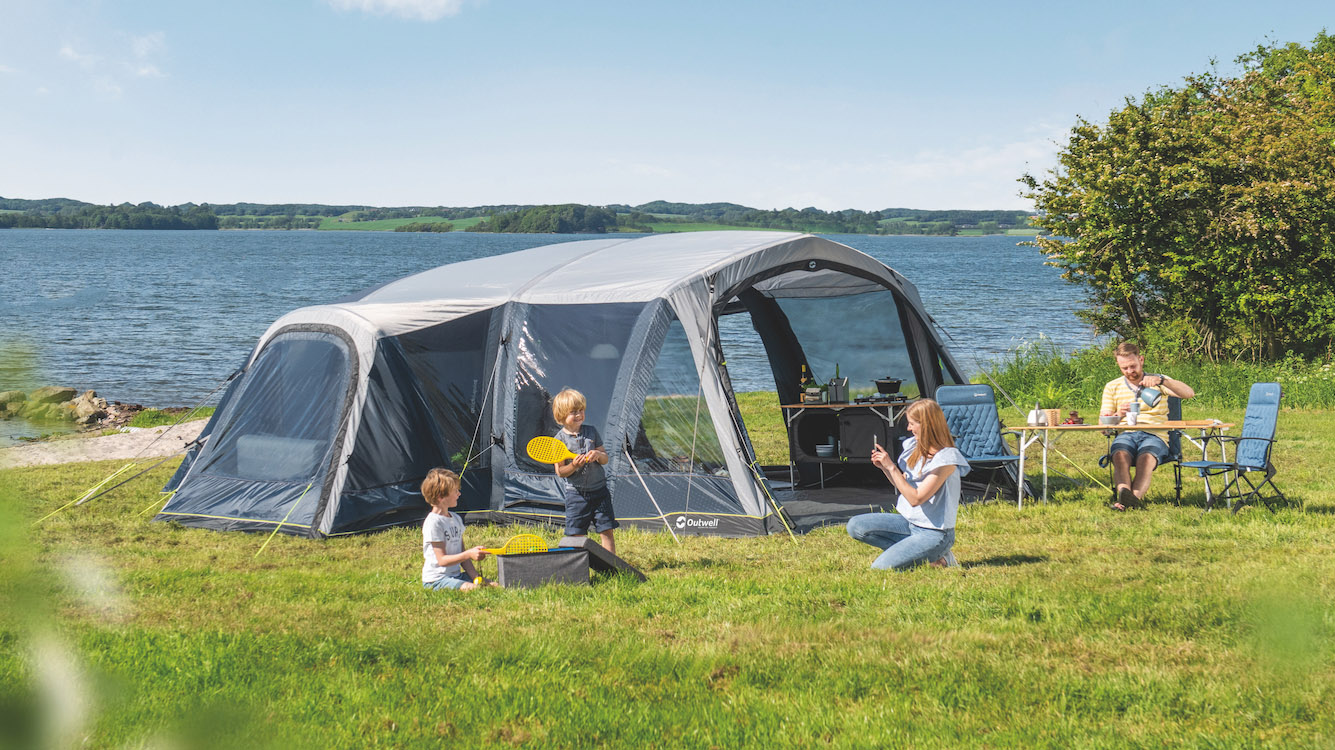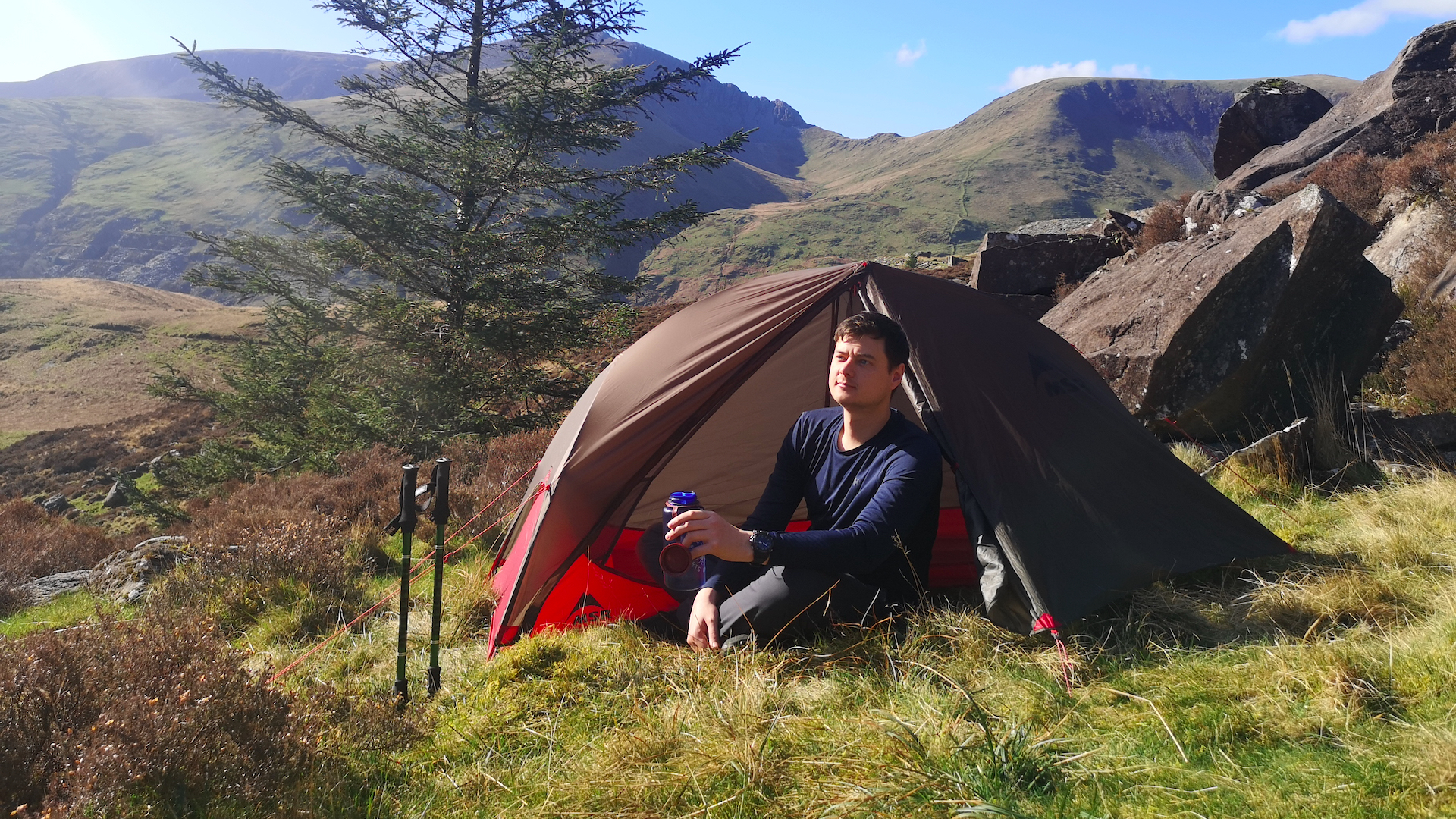
If you’re of a certain age, you’ll remember when camping tents were a little more rustic than today's space-age shelters. My early camping memories largely involve being around lots of cursing adults struggling to get a heavy piece of canvas to stay up. Once erected, it was always just a simple A-frame tent with nothing else to it. These days, however, there are all different types of tents built for different types of camping, from geodesic dome designs that stand strong against gale-force winds to multi-room tents where you can get a bit of peace and quiet from the rest of your family, even if it’s raining.
In addition to generally being lighter and much easier to pitch than their ancestors, most new tents come with the option of additional acreage, in the form of a tent vestibule. A tent vestibule can add a lot of comfort to your next camping experience, but it’s not always necessary. Read on to find out what a tent vestibule is for, and when you really might want that extra real estate.

What is a tent vestibule?
A tent vestibule is a covered section that is outside the main (zipped) part of a tent. On a lot of tents with side entrances, the vestibule is on the side of the tent, such as with the MSR Hubba Hubba NX. If the tent has two entrances, like the Big Agnes Tiger Wall UL2 Bikepack two-person tent, it may even have two vestibules. These are formed by a piece of fabric that you can stake out with tent pegs, and it doesn't have a groundsheet.
Tents with front entrances often have a front vestibule that stretches out from above the entrance. In a smaller tent like the Vango F10 Xenon UL 2, these will be staked out just like a side vestibule. On a larger tent, these may require their own tent poles as well as staking to set them up, and may have full or partial side walls but are again usually floorless – check out the Big Agnes Tensleep in our list of the best family tents to get an idea of what these can entail.

What is the point of a vestibule on a tent?
In a smaller tent, you can think of the vestibule as a mudroom, where you can change clothes before getting into your sleeping bag, kick off your muddy hiking boots and shelter them, along with any other gear like your backpack, from weather and wildlife. This helps ensure mud and moisture doesn’t end up inside your tent, but also frees up space for sleeping and hanging out. If you camp with your dog, it also makes a great shelter for a pet that doesn’t want to be in a hot tent with you all night – my old dog Daisy liked to be close to us in the tent, but as a husky it was too warm for her, so she happily slept just outside in the vestibule.
If you have a larger four-person tent like the Snugpak Journey 4, the bigger vestibule might act more like a porch. It performs all the same functions as a smaller one in terms of storing gear that would otherwise be taking up space inside your tent, though it’s larger so you could store bigger items like your camping cooler. In addition, however, you might be able to use it as a hangout spot and set up your camping chairs in the shade to get shelter from the sun or rain. Some people even purchase an extra groundsheet to make this area more like an extension of the tent, increase that camping real estate and protect gear from muddy conditions..
Though some people do use the tent vestibule as a shelter for cooking over a camping stove on a windy day, it is not recommended to have live flame within three feet of your tent, so consider this only when you have a larger vestibule setup and never leave your stove unattended.

Do you need a vestibule on a tent?
Not all tents come with vestibules – for example the Snugpak Ionosphere – and the main advantage of this is that the tent will be lighter to carry, and perhaps more like a bivy sack, which can be ideal for fastpacking adventures. However, note that with this type of tent you’ll probably want to have a plan to keep your gear dry – I wrap mine in trash bags when I’m solo backpacking with my one-person tent – or be sure that the tent is large enough for you and your backpack.
So, no, you don’t need a tent vestibule, but it can definitely add a lot of comfort and convenience to your camping trip. After all, there’s nothing worse than a muddy sleeping pad, wet hiking boots in the morning or trying to sleep with your legs tucked around your backpack. Furthermore, if there are two of you sharing a two-person tent, dual backpacks will rob you of a lot of valuable sleeping space, and a tent with two side vestibules can be even handier in this scenario. Use one for gear, and the other for entering and exiting the tent.
If your tent doesn’t have a vestibule, or you don’t think you’ll want to carry the extra weight on every trip, some tents do come with add-on vestibule options, such as the Big Agnes brand.
You can also make your own tent vestibule. If you have a tarp that is larger than your tent, you can pitch it over the tent and use trekking poles and rigged guylines to pull the majority of the shelter over your tent entrance. This might involve only a little more work, and keep your tent versatile for different types of adventures.







